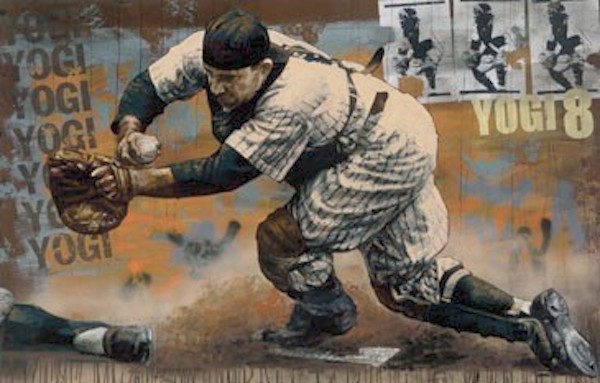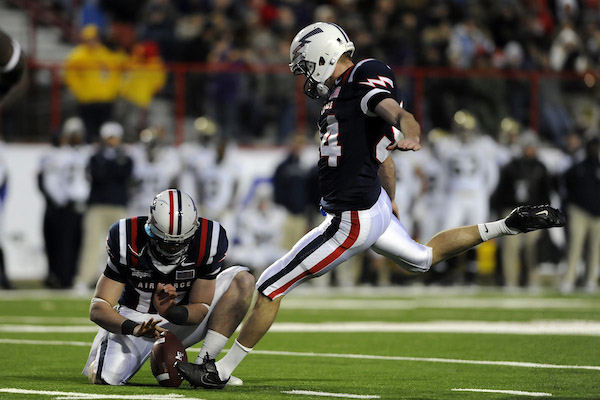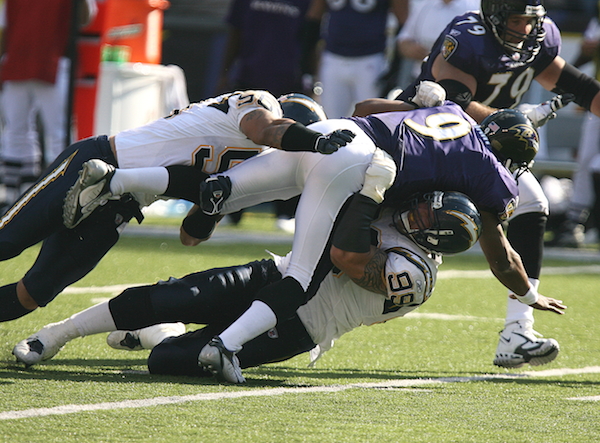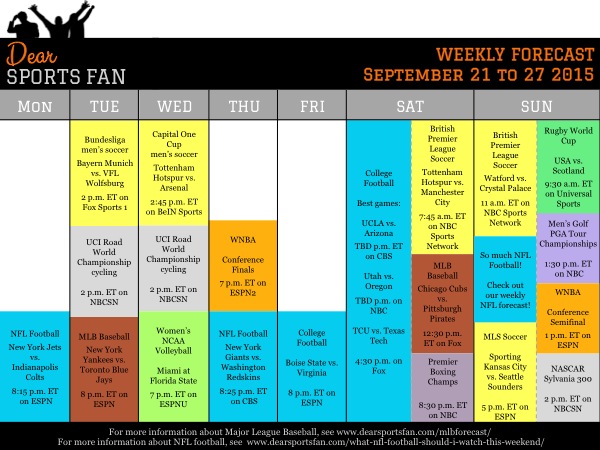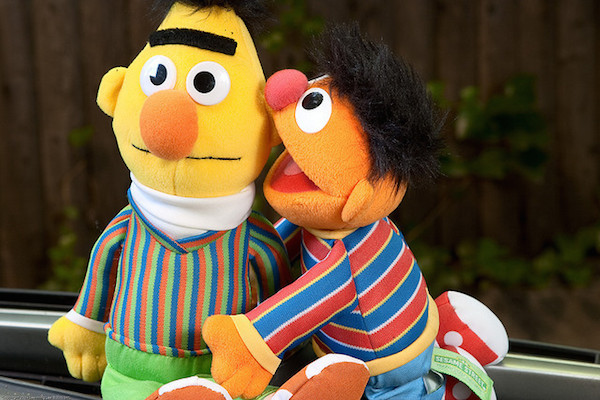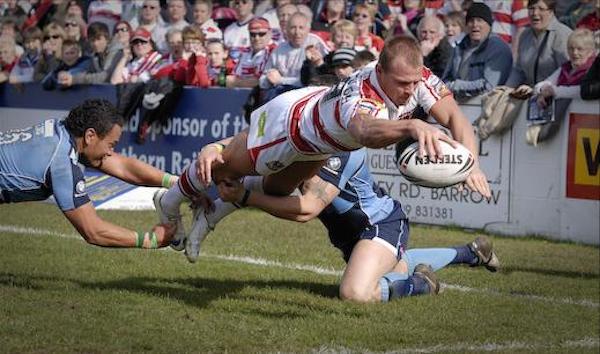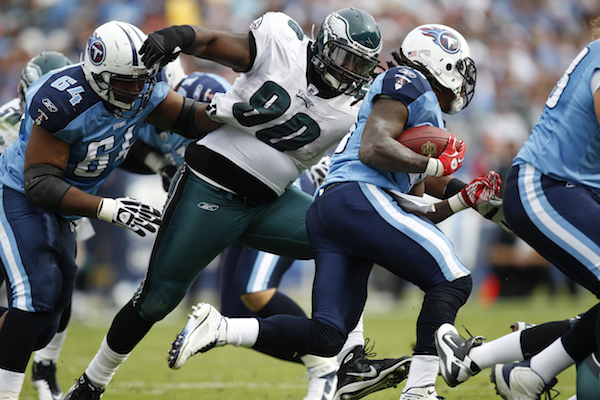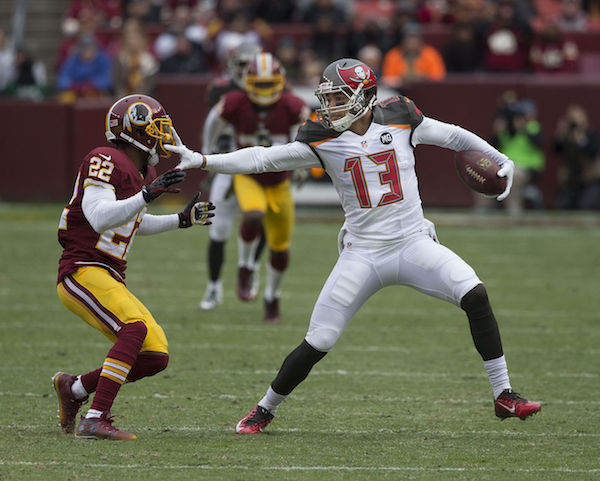Sports talk is frequently used as a common language but it’s far from universal. If you’re someone who doesn’t follow or even understand sports, you can find yourself at a disadvantage in common small-talk situations like in an elevator, waiting for a bus, sitting at a bar, or around the proverbial water cooler at work. Even if you are a sports fan, it’s impossible to watch everything and know everything. To help in these situations, we provide lines to use when engaged in a conversation about all of the high profile sporting events of the day, plus explanations of what they mean.
NFL Football
Line: TYROD TAYLOR IS GOD.
What it means: That Buffalo Bills quarterback Tyrod Taylor, who wasn’t particularly memorable as a quarterback in college, and who was the backup quarterback in Baltimore for his entire career until this year, has played much better than expected so far this year. In this game, he helped the Bills score three straight touchdowns in the fourth quarter. Despite losing to their rivals in this game, Bills fans are pretty pumped about Taylor.
Line: I guess Mariota isn’t the next coming of Marino.
What it means: Marcus Mariota is the rookie quarterback of the Tennessee Titans. Last week, he was nearly perfect, passing for four touchdowns and no interceptions. This had Titans fans thinking they might have a new all-time great to root for, someone like the beloved Miami Dolphins quarterback Dan Marion, who played for the Dolphins in the 1980s and early 1990s. The story was different for Mariota and the Titans this weekend as they lost to the unremarkable Cleveland Browns.
Line: In a game between two teams built on defense, go with the team that has a quarterback.
What it means: The Houston Texans and the Carolina Panthers are both examples of a relatively rare type of team in the NFL – those that emphasize defense more than offense. The biggest difference between the two teams is that the Panthers have an extremely talented and well established quarterback in Cam Newton, and the Texans have already switched between seemingly equally bad options at starting quarterback and this is only Week Two of the NFL season.
Line: They are who we thought they were! And we didn’t let them off the hook.
What it means: This refers to a legendary rant from former Cardinals coach, Dennis Green, after his team lost to a Bears team. He had felt that the then undefeated Bears were beatable and his team was well on their way to proving him right before messing everything up and losing the game. This game was the polar opposite. Everyone thought the Bears were going to be terrible this year. Then they played reasonably well in a Week One loss. Not to worry, the Cardinals traveled to Chicago this weekend and showed everyone that they were right in dismissing the Bears.
Line: Wake me up when Dalton does this in the playoffs.
What it means: Andy Dalton, the quarterback of the Cincinnati Bengals, has a reputation for winning during the regular season but losing during the playoffs because… well… that’s all he’s done so far in his career. In his four years as the Bengals quarterback, he’s won an average of 10 games per season (that’s very good) but lost in the first round of the playoffs each year. Even though past events don’t predict future results, it’s hard not to feel slightly bored by the Bengals consistently disappointing seasons.
Line: I have no idea what happened in Week One, but the Vikings look good.
What it means: The Minnesota Vikings were many people’s pick to be the young, up-and-coming team this year. Then they went into San Francisco for their first game and played horribly. This week, they looked just like the team many people thought they would be.
Line: It really looks like it’s over in New Orleans, doesn’t it.
What it means: Starting the season after Hurricane Katrina, quarterback Drew Brees, coach Sean Peyton, and the whole Saints franchise have had a magical decade. Behind a prolific offense, they won the Super Bowl after the 2009 season. After two straight losses to start this season, including this weekend’s dreadful loss versus divisional opponent Tampa Bay, who themselves were coming off an embarrassing loss, Saints fans have to be worried that their run has come to an end.
Line: Ooooph. I can’t wait to see the New York Post’s headline after this one.
What it means: For the second week in a row, the New York Giants lost a game that they seemed to have comfortably won. This time, they were up 20-10 over the Falcons in the fourth quarter. The New York Post enjoys nothing more than when a New York team loses in ignominious fashion so that they can make fun of them, usually with a giant (get it) bad pun on their back page.
Line: I wouldn’t take too much from this game. The 49ers were on short rest and had to fly east for an early game while the Steelers had 10 days to prepare.
What it means: There are a few scheduling quirks that people who follow football think are significant to the outcome of games. Nearly every one of them was present in this game and they were all slanted against the 49ers. Since the 49ers played last Monday night, they had one fewer day to prepare for this game than is normally the case. The Steelers, on the other hand, having played the previous Thursday, had an extra three days. Lastly, people believe that west coast teams have trouble playing on the east coast when the game begins at 1 p.m. because the players’ internal clocks still think it’s 10 a.m. – time for pancakes, not football.
Line: Classic let-down by the Rams after their big Week One victory over the Seahawks.
What it means: Despite football being a job, people still think that football teams are driven by emotion roughly the way high-school sports teams are. Win a big and emotional game in one week, like the St. Louis Rams against the Seattle Seahawks last week, and people expect to see an emotional let-down, often accompanied by a loss in the following week. The fact that the Rams lost this week to a team most people feel they should have beaten lends credence to that line of thought.
Line: I think the Cowboys vs. Eagles game went through some kind of worm-hole and came out in Oakland. With different teams.
What it means: Everyone, including Las Vegas bookmakers, expected the game between the Dallas Cowboys and Philadelphia Eagles to be an exciting, high-scoring game. Instead, that game was relatively boring and ugly while this game, which most people thought was going to be a pedestrian Ravens win, turned into the best game of the day.
Line: I didn’t think I’d ever say this, but I feel bad for Cowboys fans.
What it means: The Dallas Cowboys have won both their games so far this year, but things are distinctly gloomy for their fans. Their star wide receiver broke a bone in his foot during their first game and their quarterback broke his collar bone in this one. It’s hard to imagine they’ll win many of their next eight games or so, while their two best offensive players are out.
Line: I’m glad Green Bay got some small measure of revenge.
What it means: The Green Bay Packers played the Seattle Seahawks in last year’s NFC Championship. Win, and they would have gone to the Super Bowl. They were winning for most of the game but then collapsed in the fourth quarter and lost in heart-breaking fashion. Winning this game was a small measure of revenge for the Packers. It will make them feel better but not good.

